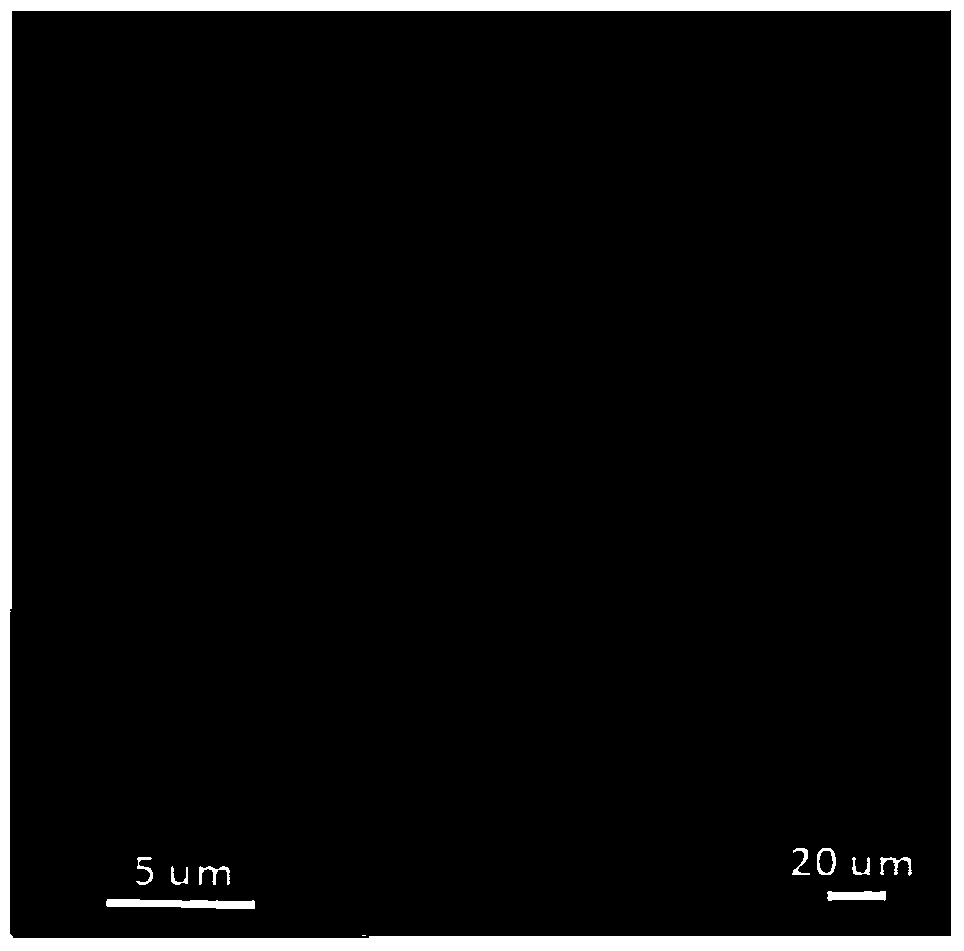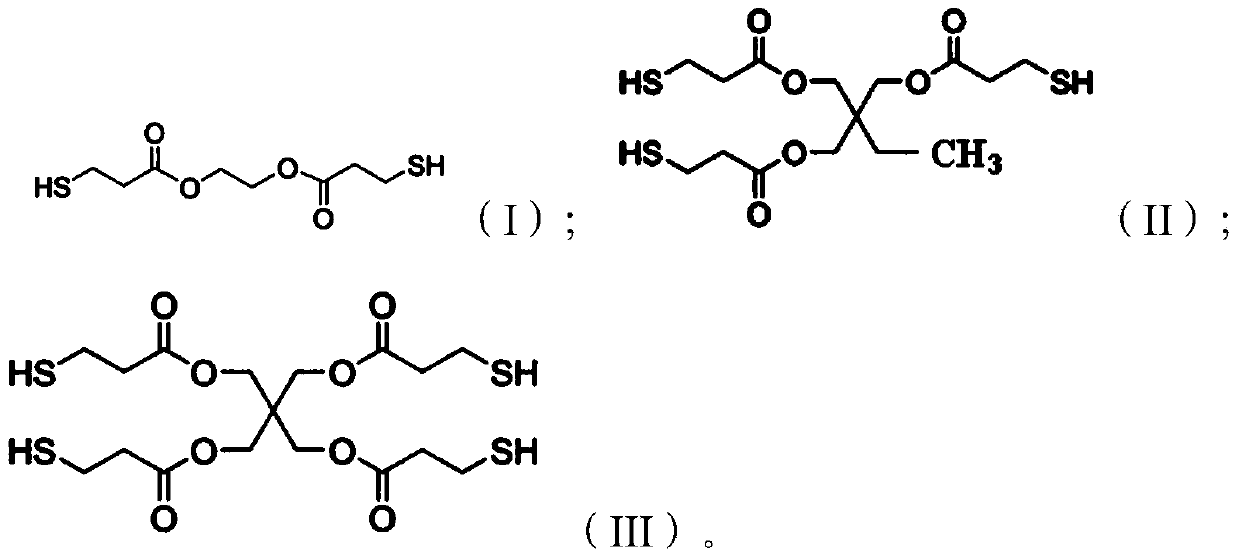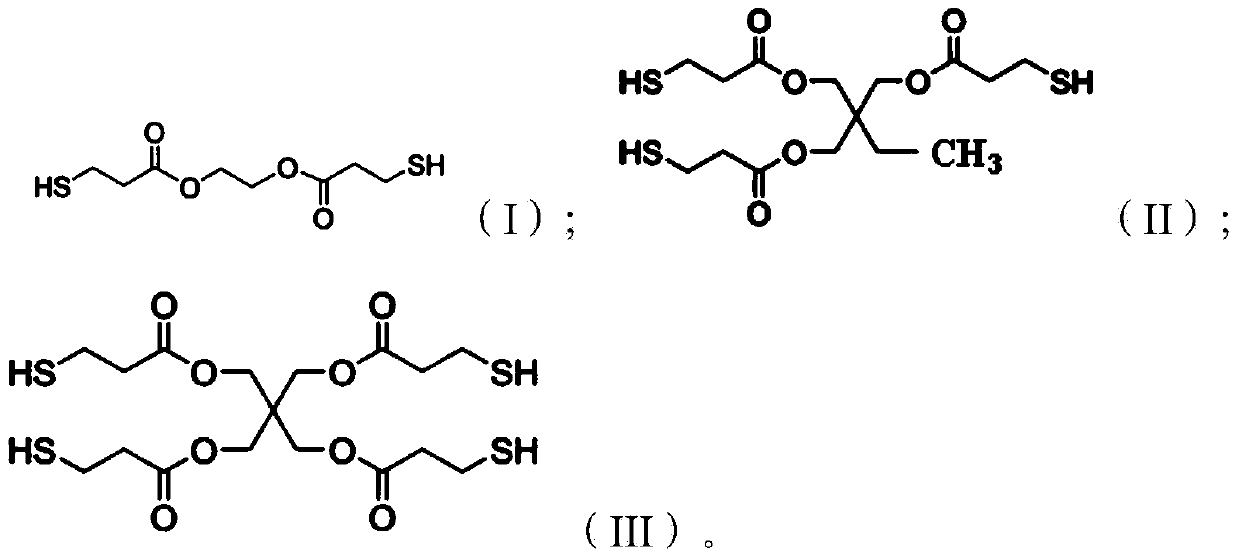Slow-release pesticide and preparation method thereof
A slow-release, pesticide technology, applied in the field of pesticides, can solve the problems of difficulty in realizing slow-release pesticides and poor rain resistance, and achieve the effects of good rain resistance, low raw material cost, and good water resistance.
- Summary
- Abstract
- Description
- Claims
- Application Information
AI Technical Summary
Problems solved by technology
Method used
Image
Examples
preparation example Construction
[0047] The invention provides a kind of preparation method of sustained-release pesticide, comprising the following steps:
[0048] a, mixing the starch-based surfactant with water to obtain the first mixed solution;
[0049] b. Mixing the hydrophobic pesticide agent, the mercapto compound and the oil phase to obtain a second mixed solution;
[0050] c. emulsifying after mixing the first mixed solution and the second mixed solution to obtain an oil-in-water emulsion;
[0051] d. performing a click reaction on the oil-in-water emulsion under photoinitiation to obtain a reaction product;
[0052] e, removing the oil phase and the water phase in the reaction product to obtain slow-release pesticides;
[0053] The steps a and b are not limited in time sequence.
[0054] In the present invention, the starch-based surfactant is mixed with the water phase to obtain a first mixed solution; preferably, the starch-based surfactant is dissolved in the water phase to obtain the first m...
Embodiment 1
[0071] Dissolve 100g of starch octenyl succinate with a degree of substitution of 0.05 in 1000g of water to obtain the first mixed solution;
[0072] 25g of 2,4-D pesticide and 3.37g of pentaerythritol tetramercaptoacetate were dissolved in 1000mL of dichloromethane to obtain a second mixed solution;
[0073] emulsifying the first mixed solution and the second mixed solution in an emulsifier for 3 minutes to obtain an oil-in-water emulsion, the rotational speed of the emulsifier is 12000 rpm, and the emulsification temperature is 10°C;
[0074]The above oil-in-water emulsion was irradiated under ultraviolet light for 10 minutes to perform a click reaction to obtain a reaction product, and the reaction temperature of the click reaction was 25°C;
[0075] The above reaction product is subjected to rotary steaming treatment at 30°C to remove the dichloromethane; the reaction product after the removal of dichloromethane is subjected to freeze-drying treatment to remove the water t...
Embodiment 2
[0079] 50g of starch dodecenyl succinate with a degree of substitution of 0.04 was dissolved in 1000g of water to obtain the first mixed solution;
[0080] The deltamethrin pesticide of 2.5g, the pentaerythritol dimercaptoglycol ester of 1.6g are dissolved in the benzene of 500mL, obtain the second mixed solution;
[0081] emulsifying the first mixed solution and the second mixed solution in an emulsifier for 2 minutes to obtain an oil-in-water emulsion, the rotation speed of the emulsifier is 13000 rpm, and the emulsification temperature is 25°C;
[0082] The above oil-in-water emulsion was irradiated under an ultraviolet lamp for 5 minutes to perform a click reaction to obtain a reaction product, and the reaction temperature of the click reaction was 50°C;
[0083] The above reaction product is subjected to rotary steaming treatment at 50° C. to remove benzene; the reaction product after removing benzene is subjected to freeze-drying treatment to remove water therein to obta...
PUM
 Login to View More
Login to View More Abstract
Description
Claims
Application Information
 Login to View More
Login to View More - R&D
- Intellectual Property
- Life Sciences
- Materials
- Tech Scout
- Unparalleled Data Quality
- Higher Quality Content
- 60% Fewer Hallucinations
Browse by: Latest US Patents, China's latest patents, Technical Efficacy Thesaurus, Application Domain, Technology Topic, Popular Technical Reports.
© 2025 PatSnap. All rights reserved.Legal|Privacy policy|Modern Slavery Act Transparency Statement|Sitemap|About US| Contact US: help@patsnap.com



